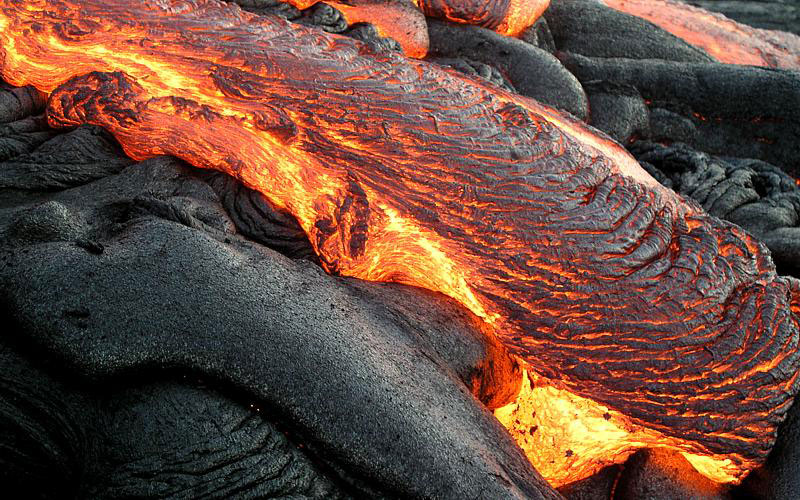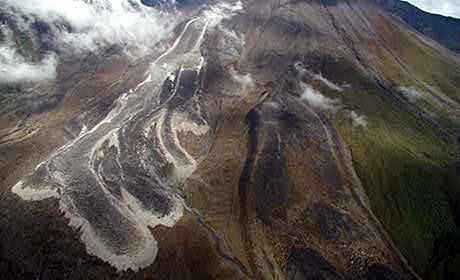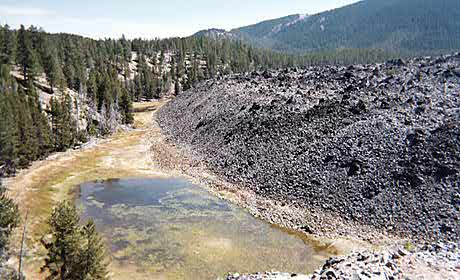Water is the most abundant fluid on the Earth's surface and it flow easily even on relatively low slopes.
Viscosity plays a fundamental role in how magma moves and how fast and far lava can flow from an erupting volcano. There is a tremendous range in the viscosities of common liquids and magmas as shown by the scale below.
Click on any one of the liquids or magmas to see how the viscosity influences their flow behavior. Note that each increment of the scale increases by a factor of 100!







